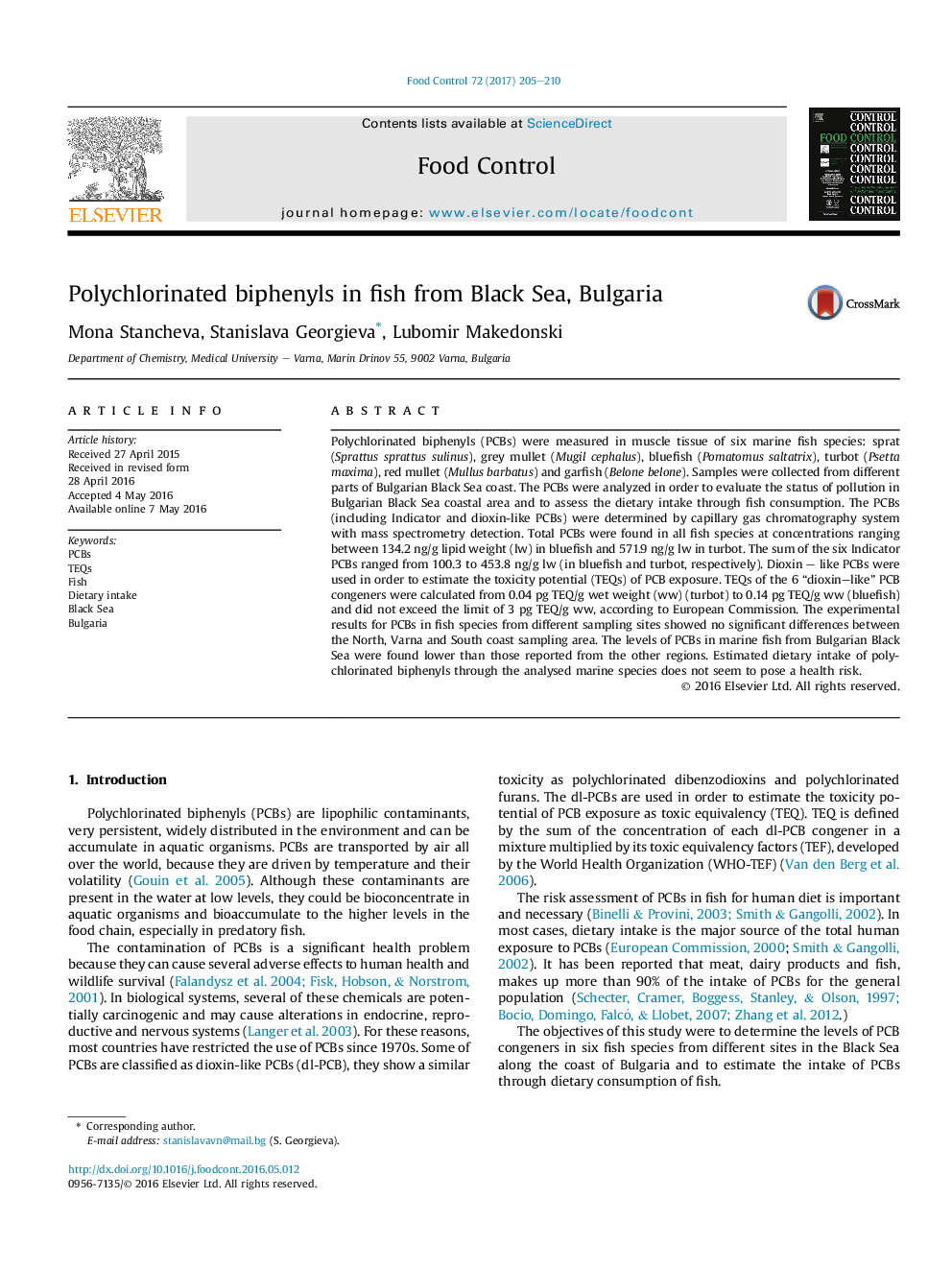| کد مقاله | کد نشریه | سال انتشار | مقاله انگلیسی | نسخه تمام متن |
|---|---|---|---|---|
| 5767356 | 1413194 | 2017 | 6 صفحه PDF | دانلود رایگان |
- We studied the levels of PCBs in marine fish from the Black Sea, Bulgaria.
- The highest PCB concentrations (ng/g lipid weight) were found in turbot.
- TEQs values in fish studied did not exceed the limit of 3.0Â pg TEQ/g ww.
Polychlorinated biphenyls (PCBs) were measured in muscle tissue of six marine fish species: sprat (Sprattus sprattus sulinus), grey mullet (Mugil cephalus), bluefish (Pomatomus saltatrix), turbot (Psetta maxima), red mullet (Mullus barbatus) and garfish (Belone belone). Samples were collected from different parts of Bulgarian Black Sea coast. The PCBs were analyzed in order to evaluate the status of pollution in Bulgarian Black Sea coastal area and to assess the dietary intake through fish consumption. The PCBs (including Indicator and dioxin-like PCBs) were determined by capillary gas chromatography system with mass spectrometry detection. Total PCBs were found in all fish species at concentrations ranging between 134.2Â ng/g lipid weight (lw) in bluefish and 571.9Â ng/g lw in turbot. The sum of the six Indicator PCBs ranged from 100.3 to 453.8Â ng/g lw (in bluefish and turbot, respectively). Dioxin - like PCBs were used in order to estimate the toxicity potential (TEQs) of PCB exposure. TEQs of the 6 “dioxin-like” PCB congeners were calculated from 0.04Â pg TEQ/g wet weight (ww) (turbot) to 0.14Â pg TEQ/g ww (bluefish) and did not exceed the limit of 3Â pg TEQ/g ww, according to European Commission. The experimental results for PCBs in fish species from different sampling sites showed no significant differences between the North, Varna and South coast sampling area. The levels of PCBs in marine fish from Bulgarian Black Sea were found lower than those reported from the other regions. Estimated dietary intake of polychlorinated biphenyls through the analysed marine species does not seem to pose a health risk.
Journal: Food Control - Volume 72, Part B, February 2017, Pages 205-210
